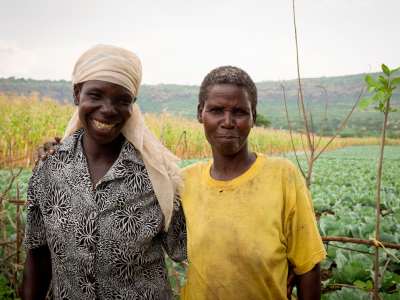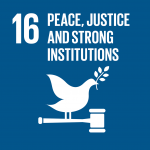Experiences from Uganda's National Adaptation Plans' Process

30 March 2020 - With an economy that largely depends on the natural resource base for growth, Uganda is still highly vulnerable to climatic changes, particularly affecting the large proportion (60%) of the population that depends on agriculture for livelihood. Uganda’s development pathway, described in “Uganda Vision 2040” and National Development Plans II and III (2015-2020 and 2021-2025) recognizes the potential for climatic changes to undo substantive developments made already and has prioritized climate adaptation and mitigation actions going forward. As some of the major undertakings on these aspects, UNDP has supported development of the National Green Growth strategy and the Nationally Determined Contributions (NDC) support project. The Green Climate Fund (GCF) approved funding to build Resilient Communities, Wetland Ecosystems and Associated Catchments in Uganda with implementation support from UNDP that will support the Government of Uganda in the management of critical wetlands that are being affected by a changing climate. In 2016, the Uganda Government partnered with the joint FAO-UNDP Integrating Agriculture in National Adaptation Plans (NAP-Ag), funded by the International Climate Initiative (IKI), to integrate the agriculture sector into Uganda’s NAPs process as well.
 During a series of interviews conducted by the joint UNDP-UN Environment NAP Global Support Programme, funded by the GEF, at the Gobeshona Conference in Dhaka, UNDP had the opportunity to speak with Dr. Revocatus Twinomuhangi. He is the Coordinator of Makerere University Centre for Climate Change Research and Innovation based in the College of Agricultural and Environmental Sciences at Makerere University, and was part of the team that supported the government produce Uganda’s National Climate Change Policy (2015) and the Agricultural Sector National Adaptation Plan (NAP). He therefore has a wealth of information on the challenges and opportunities the country is experiencing through its National Adaptation Planning.
During a series of interviews conducted by the joint UNDP-UN Environment NAP Global Support Programme, funded by the GEF, at the Gobeshona Conference in Dhaka, UNDP had the opportunity to speak with Dr. Revocatus Twinomuhangi. He is the Coordinator of Makerere University Centre for Climate Change Research and Innovation based in the College of Agricultural and Environmental Sciences at Makerere University, and was part of the team that supported the government produce Uganda’s National Climate Change Policy (2015) and the Agricultural Sector National Adaptation Plan (NAP). He therefore has a wealth of information on the challenges and opportunities the country is experiencing through its National Adaptation Planning.
How is Uganda’s National Adaptation Plan process progressing?
Uganda has two approaches to its NAP process. The first approach is where individual sectors prepare their own NAPs. The second approach is more linear, where sectors prepare their NAPs and integrate them into one, overarching ‘National NAP’. The National NAP is being prepared by the Ministry of Water and Environment under the Climate Change Department, while the Ministry of Agriculture, Animal Industry and Fisheries has prepared a sector NAPs. A NAP roadmap was prepared for the production of the National NAP, which accompanied other key documents like the NDC and the Uganda Green Growth Development Strategy that whose preparation benefited a lot from the information base of the National Climate Change Policy document process.
Which national actors are critical partners for formulating a long-term NAP?
In a NAP process there are many actors – government (national and local level), donors, civil society, as well as academia and researchers. Academics and researchers are particularly important because they can provide the evidence base to inform and align climate change impacts with national priorities, as well as gather information during the implementation phase needed for monitoring and evaluation. Civil society engagement is also essential because they work directly with communities and they understand the local vulnerabilities and challenges, and they are already doing much of the advocacy work needed in development. NGOs can support by using their links with other countries and partners to bring international insights, lessons learned and best practices to help inform formulation of the NAPs. The communities themselves are important partners, because they are the ones affected by climate change and whatever is being developed will need to consider their challenges and needs, and their indigenous knowledge, if the project is to succeed. Donors/Development partners provide the much needed financing, technology transfer and capacity building abilities with the government to include these critical partners in the NAPs process.
What role do you think universities/or researchers can play in shaping Uganda’s national policies on climate change?
Universities and researchers have four important roles to play: (1) to provide new knowledge and research findings; (2) to continue the production of competent human resource and talent through graduate trained personnel for both national and international roles; (3) to continue to produce policy makers and working closely with them; 4) to work with the private sector and business community to close the gap between industrial skills requirements and the education system. No other institutions are better positioned to provide human resources for internships, industrial trainings and work with business enterprises than universities.
What role do you think students can play in locally led climate action in Uganda?
Uganda’s growing student body across Uganda’s universities is energetic, dynamic and ready to learn. Students can act as knowledge brokers for influencing policy and they are the future policy makers of our country. Ugandan universities have platforms and links with other universities and knowledge centres in the south and the north where we can source best practices that can be replicated in Uganda. Students are agents for action and change and they live in the communities that are facing climate change challenges and so they have access to tackling the problem that lecturers and policy makers may not have.
Do you see any entry points for leveraging finance for locally led action?
In Uganda the financing mechanisms are slightly different, with a centralized governance approach at the national level. This is where policy, supervision and most plans are made centrally (in ministries and government departments) but real implementation is happening at the local level. Local governments (districts) prepare five-year local development plans that are focused around local challenges but are aligned to the national and sector development plans. This is the entry point for climate change planning, because if it’s incorporated in national plans then financing becomes easier. Local level financing comes from the national budget and local revenue (such as taxes) and donor projects. About 90 percent of the funding received at the local level is from the national budget and mainly in the form of conditional grants, and local governments rarely realise the local revenue needed to finance their budgets. Each year, the Ministry of Finance issues a budget circular call for local governments to submit their budget proposals but there is limited latitude for local governments to rally additional funds to address emerging challenges (including climate change) from the national level. Another challenge is that local level institutions don’t always know how to mainstream climate change into their plans and budgets.
Dr. Twinomuhangi particularly emphasised the importance of partnerships and communication between stakeholders. He also recalled the importance of harmonising the efforts being made across all sectors as much as possible, and the role universities can play in doing so because they are central to the knowledge creation systems.
Footnotes: Story by Melanie Pisano, Climate Change Communications Specialist/UNDP with support from Louis Nunes Da Costa, Communications Specialist/UNDP HQ.

